This content originally appeared on Bits and Pieces - Medium and was authored by Chameera Dulanga
Using the Saga pattern in Microservice transactions
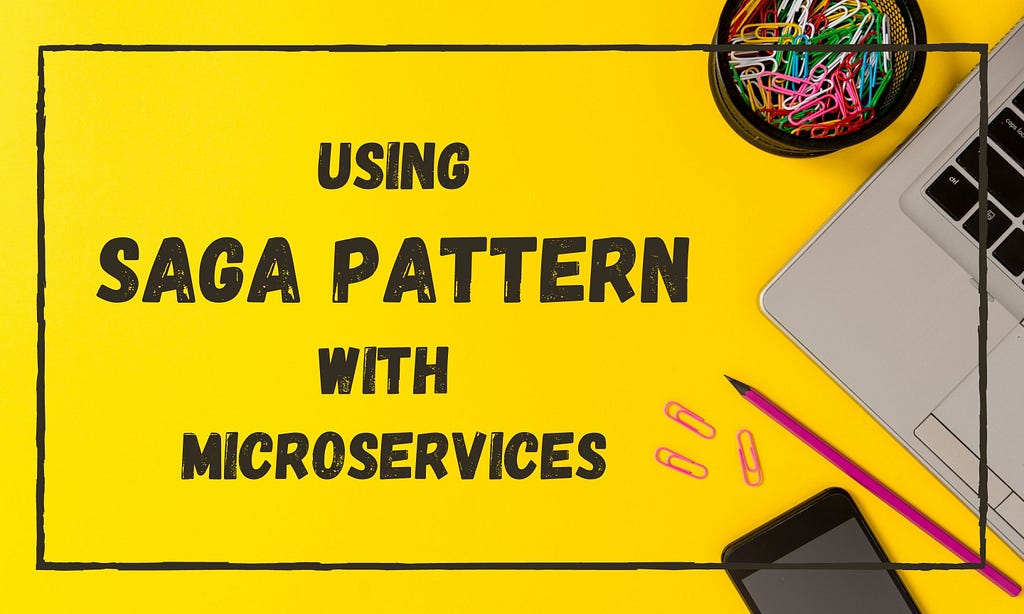
Using the microservices architecture has many benefits. It has become the norm for many large-scale applications. However, Microservices also comes with several challenges. One such challenge is handling transactions that span across multiple services.
So, in this article, I will discuss how we can overcome this by using Saga Pattern.
Why We Need Saga Pattern?
The Microservice architecture allows us to maintain applications services and their databases separately. However, with the complexity of modern-day requirements, it is common to have data changes that need to propagate across multiple services.
For example, let’s consider a simple online booking ticket system built with Microservices. There are separate Microservices for;
- Ticket booking.
- Payment processing.
- Updating available seats.
- Sending confirmations to customers.
Suppose a customer makes a booking. It requires invoking several Microservices in sequence to complete the flow starting from booking, payment, reserve seats, and send confirmation.
But, what happens if any of these steps fail? We somehow need to roll back any previous steps to maintain data integrity.
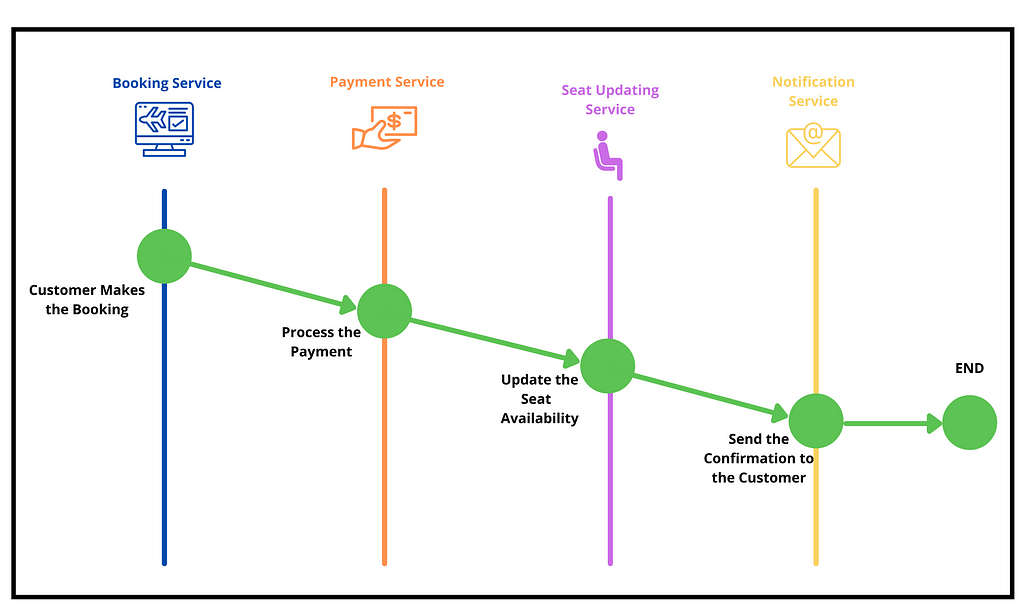
However, since each Microservice performs local transactions, it is hard to maintain ACID (Atomicity, Consistency, Integrity, Durability) properties across Microservices.
Therefore, we need a centralized communication and coordination mechanism to ensure all the transactions are completed successfully, and that’s where the Saga pattern comes in.
Introduction to Saga Pattern
The Saga pattern manages transactions that span across multiple Microservices using a sequence of local transactions. The following diagram contains the rollback events in red color, which is a part of the SAGA workflow.
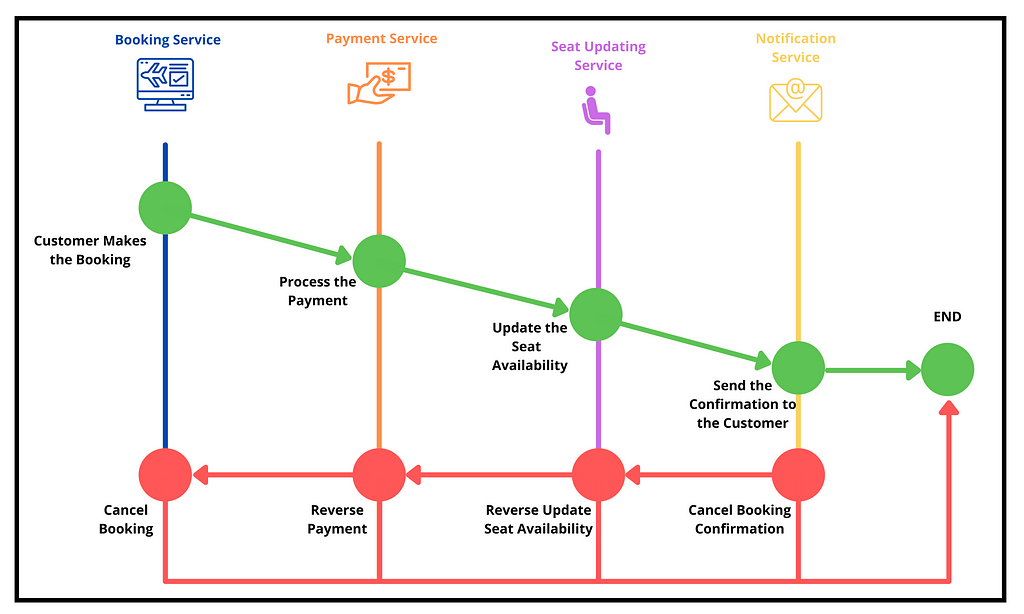
These events are triggered by the Saga Execution Controller in case of a failure happens to ensure the system’s stability.
What is Saga Execution Controller?
Saga execution controller (SEC) is the centralized component that controls the local transactions and rollback events.
It tracks all the events of distributed transactions as a sequence and decides the rollback events in case of a failure.
Also, the SEC makes sure that rollback events do not have any additional effect other than reversing the local transactions.
Note: SEC internally uses a log named Saga log to keep track of all transactions
I think now you have a high-level understanding of what the Saga pattern is and how it works. To get a better understanding, let’s see how we can implement it.
Implementing Saga Pattern
There are 2 approaches to implement the Saga pattern, Choreography-Based Saga and Orchestration-Based Saga. So, let’s see how these 2 approaches are different from each other and how they work.
1. Orchestration-Based Saga
In Orchestration-Based Saga, a single orchestrator (arranger) manages all the transactions and directs services to execute local transactions.
The orchestrator acts as a centralized controller of all these local transactions and maintains the status of the complete transaction.
Let’s consider the same example I explained earlier and break down Orchestration-Based Saga into steps.
Step 1 — User makes the booking request
When a user makes a new booking request, the booking service receives the POST request and creates a new Saga orchestrator for the booking process.
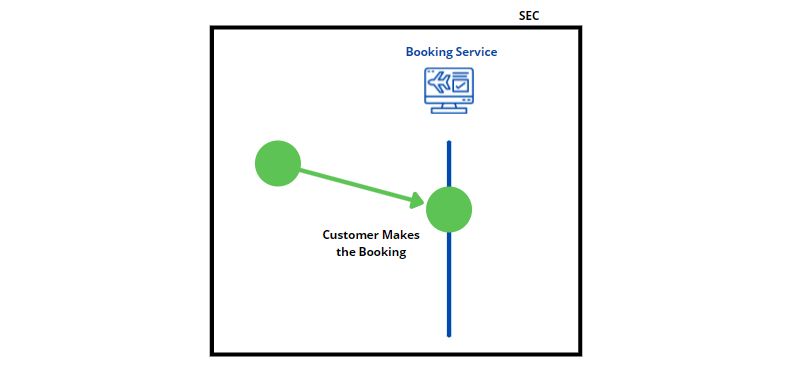
Step 2 — Orchestrator creates a new booking
Then the orchestrator creates a new booking in the pending state and sends the payment process command to the payment service.
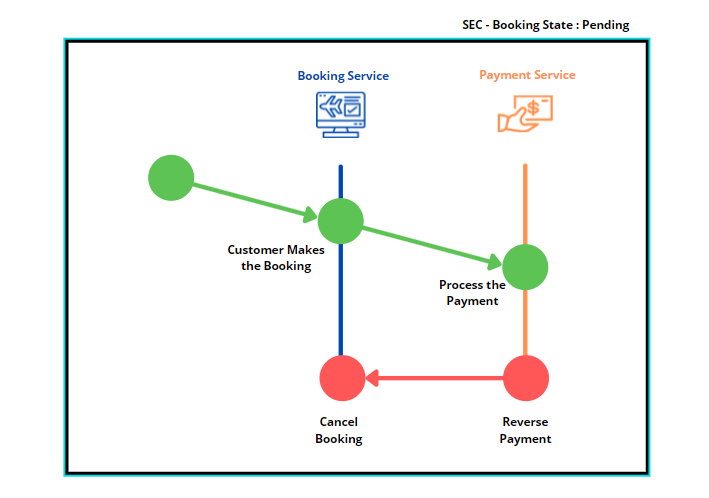
Step 3 — Executes all the services accordingly
After the payment is processed successfully, the orchestrator will call the seat updating service. Likewise, all the services will be called one by one, and the orchestrator will be notified whether the transactions are succeeded or failed.
Step 4 — Approve or reject the booking
After each service completes its local transaction, they inform the transaction status to the orchestrator. Based on that feedback, the orchestrator can approve or reject the booking by updating its state.
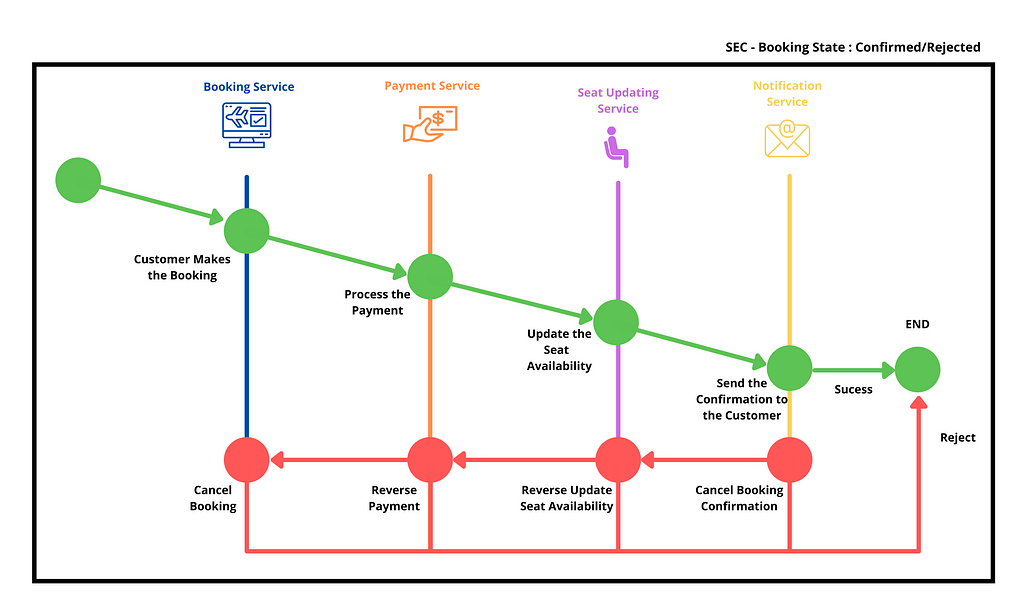
Orchestration-Based Saga is more simple compared to Choreography-Based Saga, and it is most suitable for situations like,
- When there are already implemented Microservices.
- When a large number of Microservices participate in a single transaction.
2. Choreography-Based Saga
In Choreography-Based Saga, all the services that are part of the distributed transaction publish a new event after completing their local transaction.
The Choreography-Based Saga approach does not have an orchestrator to direct and execute local transactions. Instead, each Microservice is responsible for generating a new event. And it will trigger the transaction of the next Microservice.
Saga execution controller keeps track of all these events using the SEC log and executes rollback events in case of a failure.
For example, the booking process we discussed earlier would look like this with the Choreography-Based Saga approach.
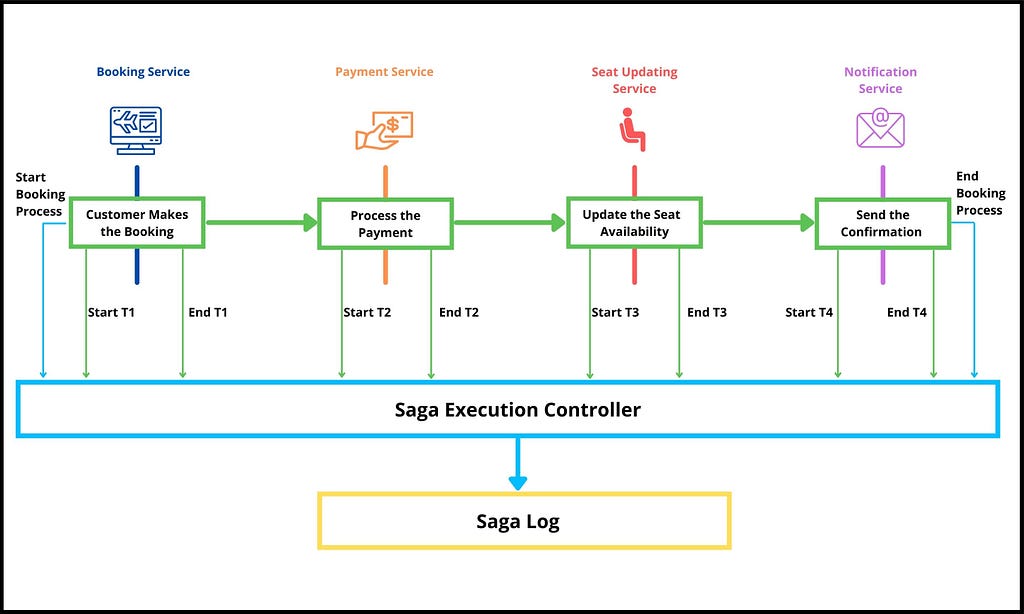
But, what would happen if the seat updating transaction fails? Then, the seat updating service will inform the SEC about the failure, and SEC will start the corresponding rollback events and ends the booking process by setting the state to fail.
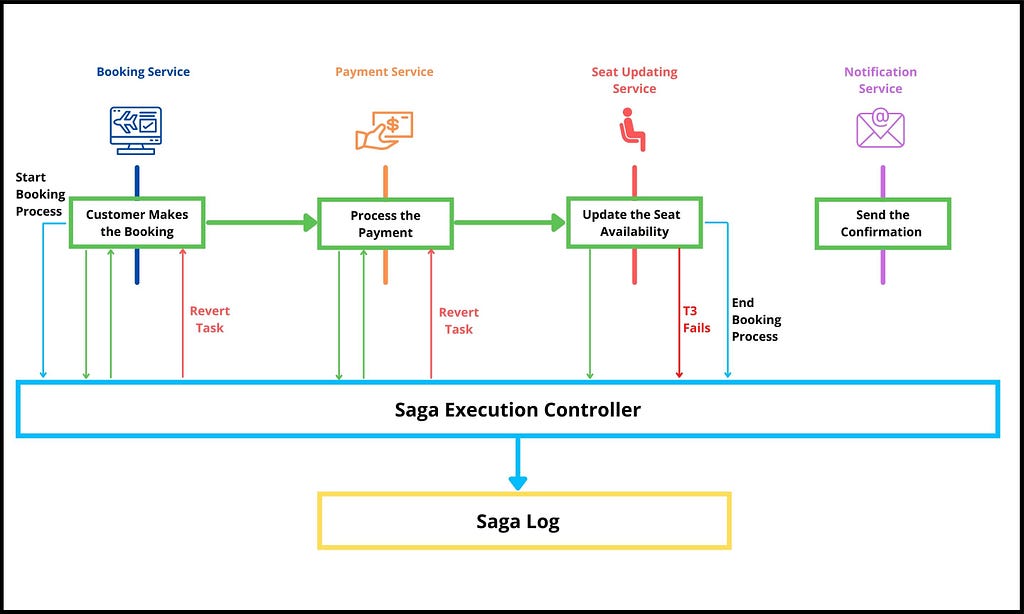
As you can see, this approach is more complex than the Orchestration-Based Saga approach. So that the Choreography-Based Saga approach is more suitable for situations like,
- When you implement new Microservices from scratch.
- When a small number of Microservices participate in a single transaction.
Build with independent components, for speed and scale
Instead of building monolithic apps, build independent components first and compose them into features and applications. It makes development faster and helps teams build more consistent and scalable applications.
OSS Tools like Bit offer a great developer experience for building independent components and composing applications. Many teams start by building their Design Systems or Micro Frontends, through independent components.
Give it a try →
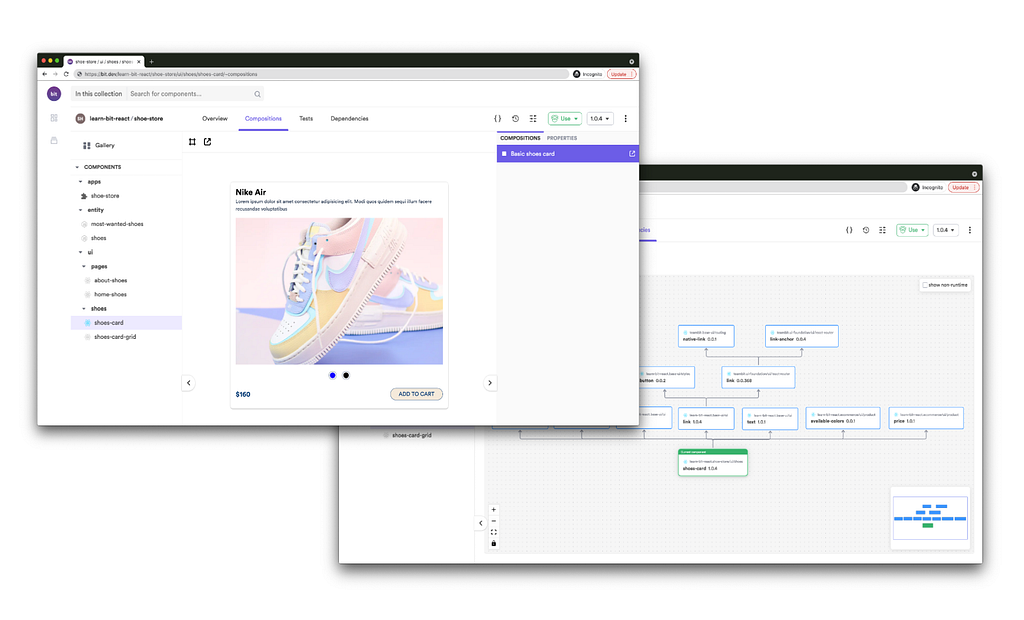
Final Thoughts
In this article, I discussed what is Saga pattern is and different approaches for implement it.
The Saga pattern’s main advantage is to maintain data consistency when transactions span across Microservices.
Also, frameworks like Camunda, Apache Camel, Axon Saga, and Eventuate Tram Saga help you implement the Saga pattern in practice.
Thank you for Reading !!!
Learn More
- Sharing Types Between Backend and Frontend with the BFF Pattern
- The Dilemma of Code Reuse in Microservices
- Mini Web Apps: A Bounded Context for MicroFrontends with MicroServices
How to Use Saga Pattern in Microservices was originally published in Bits and Pieces on Medium, where people are continuing the conversation by highlighting and responding to this story.
This content originally appeared on Bits and Pieces - Medium and was authored by Chameera Dulanga
Chameera Dulanga | Sciencx (2021-10-13T21:00:17+00:00) How to Use Saga Pattern in Microservices. Retrieved from https://www.scien.cx/2021/10/13/how-to-use-saga-pattern-in-microservices/
Please log in to upload a file.
There are no updates yet.
Click the Upload button above to add an update.
